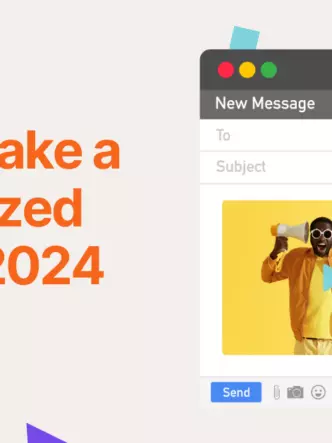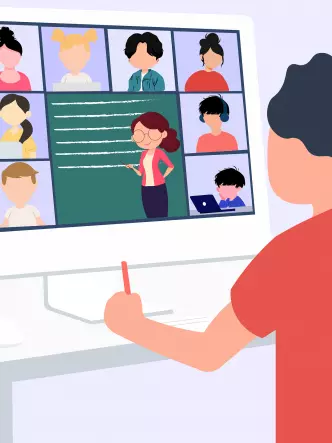Progress continues in the world of eLearning as various mediums are used to enhance the learning experience. Video is one of the best tools to enhance eLearning. It’s visual, entertaining and suits most learning styles. Popular techniques to use in eLearning videos are storytelling, humor, animation, and interactivity.

What is an eLearning business?
An eLearning business is learning conducted online. It is usually run by a person skilled in a particular industry or topic. The business makes income either from subscriptions which give students access to a range of learning materials or from the one-off sale of courses or eBooks.
Many opportunities exist to establish a successful eLearning business, but you need to make sure that you have a valid idea or solution to a problem before diving in head first.
Running an eLearning business comes with many advantages because it’s built around passive income, it’s scalable, and it gives you creative control. It also has great profit potential. The eLearning business is predicted to be a $37.6 billion market by 2020.
Why use video for eLearning?
A report by Cisco reveal that 80% of internet traffic now consists of videos. Creating videos requires money, resources, workforce and thought so it can be challenging to undertake yourself. However, of all engagement and interactional strategies, video-based learning makes the most sense.

Some of the reasons to use video in eLearning are:
- To increase engagement and emotional response to a topic. Capturing attention is one of the age-old challenges faced by instructional designers, and most learners would rather watch a video than read a document.
- To make complex information easier to understand. Chunking information in short videos makes information more palatable. Studies reveal that microlearning increases engagement by 50%. More engaged learners retain information better.
- To reach learners on-the-go. Watching video on smartphones gives them the option of learning at any time and in any place. With access to short videos on mobile devices, it’s no wonder that 99% of smartphone users believe that mobiles enhance their eLearning experience.
- To enhance interactivity. Two-way communication increases learning efficiency and interactive video has made this possible in the eLearning environment. Using strategies employed in games, such as quizzes, bonus points, scoreboards and feedback, interactive videos help learners to master complex concepts and keep them engaged for longer.
- To emphasize important learning objectives or concepts. A good approach is to focus each video on one important learning objective.
- To demonstrate techniques. Video lends itself to ‘how-to’ instructional learning. Teach learners how to use new software, fix a car, bake cookies, sew a garment or grow their own food. You can show them the practical steps they need to take to complete each task.
Find a profitable course idea
Focus on pain points rather than just trying to pull an idea out of the air. Your online course should provide an effective solution to a real problem. You need to do some research to pinpoint who your learners will be and what they will want to know.

Ask yourself the following questions:
- What practical skills or knowledge do I have to offer?
- Where can these skills or this knowledge be applied? Write down the professions that need these skills.
- What motivation would someone have for learning these skills? (Do they want to pursue a career in one of the professions, be better at what they do or stay up-to-date with the latest findings?).
- Make a list of specific topics you would need to cover for students to achieve these goals.
Go to forums or discussion groups related to your topic for insights; take a look at similar courses being offered already; test audience demand with polls, surveys, etc and; look at keyword data to see what people are looking for.
Create your course videos
Now it’s time to start building your course around the topic you’ve identified. Don’t try to tackle too much at first and create your whole video course without realizing that your learners have a problem with your audio quality in your first video. If you pilot your course with a small group of your target audience, you can learn from your mistakes.
Research and plan
For eLearning, you need to create quality videos, so if you’re going to do it yourself, you have to take it seriously. You can create good quality videos using your smartphone, but nothing distracts a learner more than a bad quality video with inconsistent lighting and acoustics.

If you want to educate people, you have to gain their trust. If they feel you’re improvising as you go along, they are unlikely to trust you.
Before you even start writing a script, you will need to research and plan everything, from camera angles to lighting.
Choose the right location and try to limit shooting to a single day. Learners can focus on the content without being distracted by background noises. Taking such details into account from the very start will help you with every step of production.
Decide on length
The purpose of your eLearning videos will influence their length. There is a limit to how much learners can absorb at a time.
Informative videos should be about 7 and 12 minutes. It may be better to structure information in a series of shorter clips. Using interactive elements such as clickable icons, puzzles, games, and riddles instead of tests can help learners to stay engaged for longer.
Be visually consistent

When creating eLearning videos, visual consistency is important. The following tips will help you to maintain the same look and feel for all your videos:
- Use the same fonts, sizes, and colors for any text elements.
- Be consistent with the icons and symbols you use.
- Don’t use a great variety of sound effects.
- Define a color palette to use throughout.
- Stick to the same type of images.
Use the right tools
Good videos can be created using a smartphone, but you will also need a stand for stability, a suitable microphone, and editing software.
Write your scripts
Your script helps you to organize the information you plan to share. You will need to refer to your script at each stage of shooting a video. This ensures that each piece of dialogue or scene reinforces your key objective without diversions or added extras.
Create storyboards
This means creating a visual representation of the shot of each scene in the video. The best way to appeal to learners is with a storytelling approach. Try to summarize the content of each video in a narrative format and have a clear beginning, middle and ending.

Choose a platform
Regardless of what online courses you want to provide, choosing where to host your videos can have an impact on performance. If you’re hosting content on your own server, it can quickly take up space, and configuring it properly is a hassle.
Using a video hosting platform can make managing your video content much easier. You can categorize videos, ensure smooth playback at the highest quality, customize the video player, and have access to helpful analytics. Scalability is possible, and you are able to grow your number of learners.
Security is another important consideration. When your business is based on valuable video content, you want to make sure that it’s protected and ensure that only signed up members can see it. Platforms may offer encrypted streaming, watermarking and password protection as security options.
So, in essence, online video platforms automate the process of uploading, encoding, optimizing and managing videos as well as safeguarding them.
If you decide to create your own platform, you will need your own domain name, hosting that can handle your video streaming, paywalls to protect your valuable content and eCommerce capabilities.
Course management systems offer ready-made tech platforms for your online video course. Skills are easily learned by even beginners for hosting eLearning courses. A Learning Management System (LMS) allows you to build courses, create quizzes and games, utilize mobile interface techniques etc. Five of the most popular LMS’s are:
You can even add LMS functionality to your WordPress site with plugins.

Think about developing one course completely and selling it to help fund further growth. It’s possible to sell your course through a third-party platform, such as Opensesame, or Shopify if you don’t want to sell it from your own site. You can also sell your courses to teachers on sites like Sharemylesson and Teacherspayteachers.
The bottom line
If you have skills or knowledge that other people want, it’s possible to create a whole business around sharing your insights with them. Deliver your lessons online, and you have the potential to get in front of thousands of viewers. Add a subscription model to the mix whereby you create a video library, and you can charge recurring monthly fees for access.









